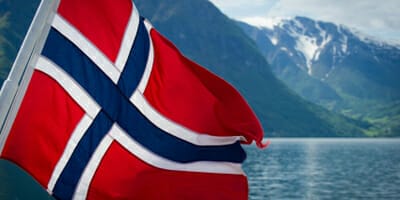Water and how a company manages its exposure to this increasingly scarce resource is a key focus for Norway’s sovereign wealth fund in assessing the environmental and social performance of the more than 8000 companies in its portfolio.
Anne Kvam, the head of Norges Bank Investment Management’s (NBIM) corporate governance team, says the sheer size and scale of understanding the plethora of environmental, social and corporate governance (ESG) risks in its investments demands a focus on a selection of companies and a few key risks. Norges Bank is Norway’s central bank and NBIM manages the Norwegian Government Pension Fund Global on behalf of the ministry of finance.
“If we are to work actively on all 8000 holdings on all environmental, social and corporate governance topics, this would, of course, be impossible,” Kvam says.
“This is why the executive board decided we will have six focus areas and three of those are tied into environmental and social areas, and they are children’s rights, water and climate change. This doesn’t mean that we don’t see that there are many other risks out there that we hope and expect companies to manage.”
NBIM, the asset management arm of Norway’s central bank, is responsible for managing the investments of the $576-billion sovereign wealth fund.
Kvam explains that its investment staff can access an easy-to-handle, one-page report on a company that includes a scorecard of its performance across these three key areas.
The report draws on internally generated information and external research that the asset manager purchases.
Data on these three focus areas is gathered on more than 2000 companies. Broader ESG reporting for the fund covers 4000 companies, representing 80 per cent of the fund’s holdings.
Distilling best practice
NBIM has had water as one of these key focus areas since 2009. This includes issuing guidelines for companies it invests in on how they should report and manage water risk.
Under these guidelines, companies are expected to have a water-management strategy that evaluates the extent of water use in the production process and, more broadly, in a company’s supply chain.
Companies are also required to report on how its water use affects surrounding communities and how water risk management is built into corporate-governance processes.
NBIM reports that it is invested in several sectors with high water consumption. It has determined seven sectors particularly exposed to water-related risk: agriculture, food, manufacturing and power, mining, pharmaceuticals, pulp and paper, and water supply.
The fund has identified 1100 companies where water is an important input and output factor and these companies have a combined market value of $46.1 billion.
Kvam says that NBIM has narrowed its analysis of water risk at the companies it invests in to 447 companies selected from these high-risk industries.
These companies represent the largest holdings for the fund across these chosen sectors.
It reports annually on these companies in its Sector Compliance Report, which aims to encourage better reporting practices across industries, as well as identify top performing companies for disclosure and management of water risk.
The report notes that: “despite a notable increase, companies’ reporting on relevant metrics that track their exposure to water-related risks and the performance of their water management systems was still too low.”
The forestry and paper sector had the highest level of disclosure whereas companies in the mining and industrial sector had the lowest.
“We are dependent on companies disclosing good relevant information so we can make good investment decisions and good calls,” Kvam says.
Nestlé, Anglo American, Anheuser-Busch InBev and Danone were among 14 companies with the highest marks for reporting on water-related risks in 2011.
GlaxoSmithKline, Kellogg, Kirin Holdings, Merck & Co, Molson Coors Brewing, PepsiCo, Pfizer, PG&E, SABMiller and Sanofi were also top performers.
Of the 447 companies assessed in this area, 32 per cent scored zero.
“It is common to name the worst performers as a kind of naming-and-shaming part of ESG, but we are trying the other route by naming what we think are the best performers and who are the best at disclosure,” she says.



